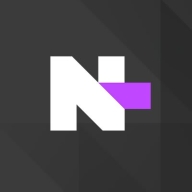


Microsoft Remote Desktop Services and N-able Take Control are two popular tools in the remote access and IT management category. Based on user reviews, N-able Take Control generally outperforms Microsoft Remote Desktop Services in terms of features and deployment ease.
Features: Microsoft Remote Desktop Services offers basic remote access capabilities essential for enterprise environments. It supports remote application deployment, session-based desktops, and integration with Windows Server. N-able Take Control provides advanced features like multi-monitor support, in-depth session reporting, and extensive diagnostic tools. These additional functionalities are more beneficial for comprehensive IT management.
Room for Improvement: Microsoft Remote Desktop Services could benefit from more intuitive navigation and additional features such as session recording and better mobile support. There is a need for improved scalability and enhanced security measures. N-able Take Control faces criticism for occasional stability issues and could improve its mobile app integration. Users have suggested enhancements in its reporting tools and the need for a simplified user interface.
Ease of Deployment and Customer Service: Microsoft Remote Desktop Services users find the deployment process straightforward but it requires substantial IT expertise. Its customer service is more formal and may lack responsiveness. N-able Take Control is celebrated for its quicker deployment and ease of use. In terms of customer service, N-able Take Control receives higher marks for responsiveness and support quality.
Pricing and ROI: Microsoft Remote Desktop Services provides a cost-effective solution, making it appealing to budget-conscious users. However, the ROI can be hampered by its limited feature set. For example, Microsoft Remote Desktop Services costs around $5 per user per month. N-able Take Control’s higher pricing, approximately $19 per user per month, is justified by its robust features and improved efficiency, leading to better user-perceived ROI.
| Product | Market Share (%) |
|---|---|
| Microsoft Intune | 9.6% |
| Microsoft Remote Desktop Services | 9.4% |
| N-able Take Control | 1.0% |
| Other | 80.0% |



| Company Size | Count |
|---|---|
| Small Business | 116 |
| Midsize Enterprise | 46 |
| Large Enterprise | 152 |
| Company Size | Count |
|---|---|
| Small Business | 39 |
| Midsize Enterprise | 16 |
| Large Enterprise | 30 |
Microsoft Intune provides centralized management of mobile devices and applications, ensuring security, compliance, and productivity through integration with Microsoft services like Microsoft 365 and Azure Active Directory.
Organizations use Intune for managing mobile devices and applications, enhancing security and compliance across platforms. With features like single sign-on, conditional access, and zero-touch deployment via Autopilot, it facilitates efficient operations. Intune's scalability, easy enrollment, and capabilities such as remote wipe support diverse device management, offering robust data protection and efficient operation. Despite its features, improvement areas include reporting, compatibility with non-Microsoft devices, and better support for macOS and Linux devices.
What are the key features of Microsoft Intune?
What benefits should users look for in reviews?
In industries such as finance, healthcare, and education, Microsoft Intune is implemented to ensure secure and compliant device management. Companies leverage its capabilities to deploy security policies and manage both corporate-owned and BYOD environments, facilitating a unified approach to data protection and compliance.
Microsoft Remote Desktop Services is a highly regarded remote access tool in addition to being a top-ranked Virtual Desktop Infrastructure (VDI) solution in the marketplace today.
Microsoft Remote Desktop Services (RDS) is a suite of valuable elements of the Windows operating system (OS) that serve specific desired objectives. Microsoft RDS integrates various features that allow approved users to gain access to graphical desktops and Windows applications remotely. Approved users are able to deploy applications or even a complete desktop without having to install anything on their devices. Everything remains in the cloud. This ensures that there are never any compatibility issues and keeps the organization's original network secure at all times. Administrators are also able to ensure that data cannot be stored in any unapproved location, such as the local device, unapproved drives, or any other location.
Microsoft RDS makes it easy for business organizations to access Windows Desktops and other Windows applications remotely to ensure today’s busy enterprise organizations are able to maintain the highest levels of productivity at all times. There are two basic ways organizations can effectively utilize RDS.
Microsoft Remote Desktop Services Benefits
Microsoft Remote Desktop Services has many benefits. Some of its most valuable benefits include:
Microsoft Remote Desktop Services makes it easy for busy enterprise organizations to stay productive and remain competitive in today’s aggressive marketplace. An organization's end-users can be given access to their own specific desktops from any location, anytime, using any approved device. Additionally, users can access Microsoft applications without having an effect on their device's resource capacity or performance.
Reviews from Real Users
“What I found most valuable in Microsoft Remote Desktop Services is accessibility because the solution lets you take control of your computer remotely, and that's a good feature.” Pascal B., IT consultant at Secoptrial
“The most valuable features of Microsoft Remote Desktop Services are unification, central management, and accessibility.” Jan S. Solution Architect at a tech services company
“The most valuable features are that it is fast and cost-effective. I am not aware of a replacement currently on the market.” Ramon H. Director at Empaco
Whether your clients are working from home, in the office, or on the go—they need you. N‑able™ Take Control is a powerful remote support solution with troubleshooting tools designed to help you resolve issues quickly and effectively.
We monitor all Remote Access reviews to prevent fraudulent reviews and keep review quality high. We do not post reviews by company employees or direct competitors. We validate each review for authenticity via cross-reference with LinkedIn, and personal follow-up with the reviewer when necessary.